| Weight | 40 g |
|---|---|
| Dimensions | 50 mm |
| Focal Length (mm) | |
| Max Aperture (f) | |
| Min Aperture (f) | |
| Aperture Blades | |
| Elements | |
| Sharp (Near) | |
| Sharp (Far) | |
| Front Thread | |
| Rear Mount | |
| Flange-Focal Distance (mm @ ∞) | |
| RF/L Extension (mm) | |
| Serial Numbers | |
| Production |
Steinheil Cassar 50/3.5 [V1]
Silver German enlarger lens with black nose and mount. Fitted to Durst 404 and R-305 Reporter in 1962. Also sold as cine lens.




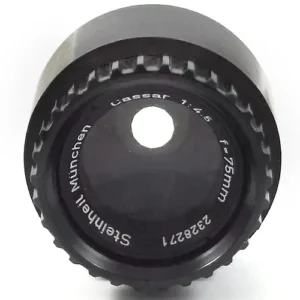
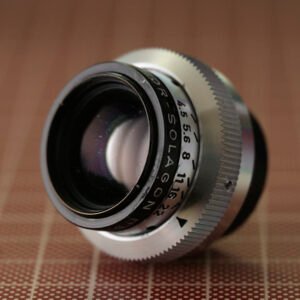
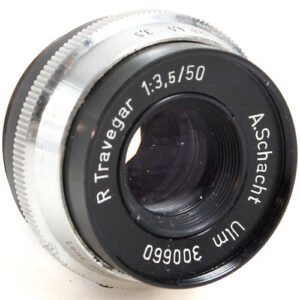

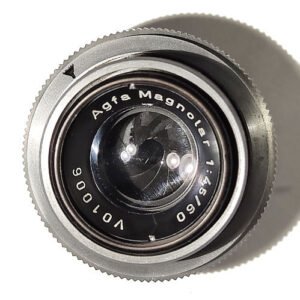


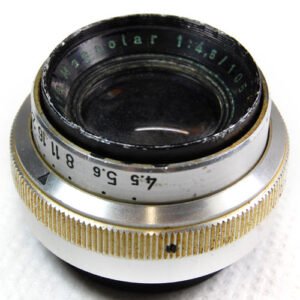

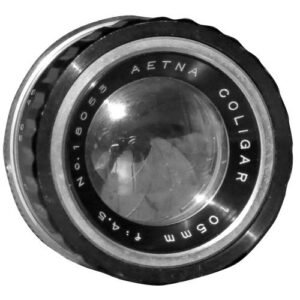
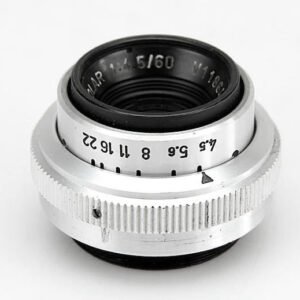
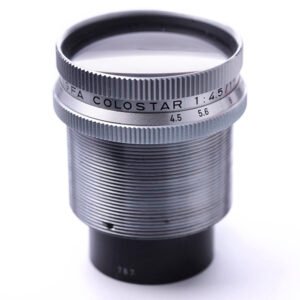
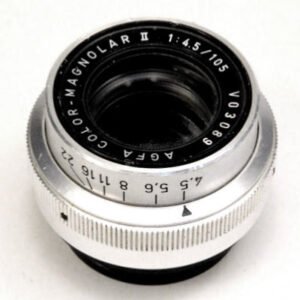
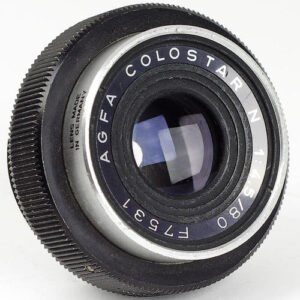
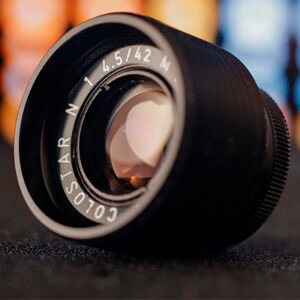
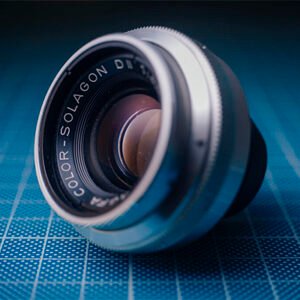

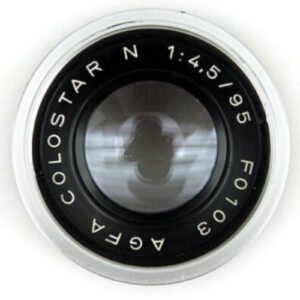

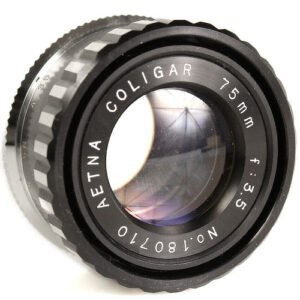

16:9 –
If you’re looking at the Cassar’s aperture ring and thinking ‘Who do we appreciate?’ you’re not alone. Though perhaps you should be.
Steinheil’s superior little triplet delivers unexpected sharpness at close range, scoring a solid Silver 84.5% for averaged performance at f5.6-f8. A fair showing of 8.2 / 7.6 (Zone 1 / 3) wide open maintains its f4-f8 average at 82.7%. Wherever you look (providing you keep the working distance below a metre) this delivers fine images, with better-than-average contrast and neutral colour. It’s hard to find geometric or chromatic aberrations, and it’s physically practical, too: the longish F-FD enables helicals of up to 21mm depth to be used while retaining infinity focus, and there’s even a thread on the nose for a filter or reverse mounting. The aperture ring is broad and easily operated, although some samples have been observed with a tight or dry-lubed mechanism. This is an excellent arm’s-length lens.
If there is a bugbear, it’s threads: 21.5mm isn’t a common hood size, and camera-side mounting isn’t painless easy unless your copy comes pre-fitted with the M39 adaptor. Fortunately, many on the market do (including the one pictured here).
If there’s another downside it’s the steep drop-off in performance at long range, falling to a Bronze 78.5% for f5.6-f8 average. For better long-range performance, pick an enlarger lens with more elements; for a triplet, this isn’t bad: interrogating the 120+ reviews so far conducted, the only triplets that compare with this figure at distance are the Rodenstock Rogonar 50/2.8 (79.3%) and Schneider Componar 75/4.5 (78%) – the latter of which is perversely sharper further away than close-up. Averaging the Cassar 50/3.5’s short and long range performance (barely) qualifies it for a low Silver award, but in ‘light’ of the following, we felt it more fairly deserved a high Bronze.
The bad news is vignetting. Few lenses this small throw ‘loose-cut’ 43mm image circles. If this was a pair of jeans, it would be boot-cut: although it covers a 35mm full frame, vignetting is increasingly present as you stop open. The sensor is only really uniformly lit at ‘8’ (presumably f16), where the image is almost as sharp as the smaller apertures thanks to those tiny elements – just 12mm in diameter front and rear. An unpublicised fillip is that the aperture ring permits stopping down a little beyond the 8-mark, closing the minimum aperture to around f18.
To end a broadly positive notice on a positive point, the Cassar comes from a period when diaphragms were circular, which, when used as taking lenses, participates in generating attractive bokeh with a natural look, and this little Steinheil’s drawing style is a useful combination of adequate sharpness (for video, at least) and period style. If you want vignetting, it’s there on full frame; if not, shooting a smaller format gives room for movements and crops the nasties. And being a triplet, it will create soap-bubbles from defocused specular highlights. For a lens whose cost is likely to be ‘disposable’, this is a well corrected and worthy option from a now-overlooked maker >.